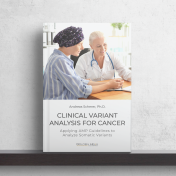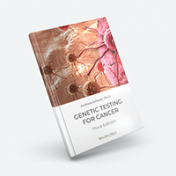When using VarSeq; annotations, application settings, and assessment catalogs are all stored locally. Sometimes these resources can grow to large space grabbing directories, causing you to either purchase additional storage devices or getting rid of previously downloaded resources you might need down the road. But there’s hope! You can set where you want all of your data stored to be… Read more »
Smoothing Hurdles into Speed Bumps when creating Annotation Sources Although most researchers assume that getting the pile of VCF sequence files is the largest hurdle in moving towards an analysis, there still exists the looming step of normalizing the variant calls in annotation sources to make variant comparison easier. In this ever-refining field of study, VarSeq continually works to increase… Read more »
Hypertrophic Cardiomyopathy History It was December 9th, 1989, when one of Loyola Marymount’s strongest inside players, Hank Gathers, collapsed during the middle of a collegiate level basketball game against UC Santa Barbara. Measuring in at 6’7” and weighing 210 pounds, Gathers was diagnosed with exercise-induced ventricular tachycardia, or in layman’s terms, an abnormal heartbeat. Even with the concerning nature of… Read more »
Clinical Variant Analysis for Cancer – Applying AMP Guidelines to Analyze Somatic Variants Detecting cancer at an early stage can make it much more treatable. Developing tests and making them clinically actionable is crucial to beat this disease. This eBook covers the state-of-the-art gene panel tests for cancer. Of course, there is more that can be done. The field is… Read more »
We are upgrading all VSClinical +Cancer Add-On purchases to a 15-months license! The individualized nature of tumors requires genomic testing for providing the best outcomes for patients. Next-Gen Sequencing enables the detection of small mutations, copy number changes, and common fusions affordably and with high precision. However, the interpretation of these detected variants is arduous without a comprehensive analytical workflow… Read more »
Clinical Variant Analysis for Cancer – Applying AMP Guidelines to Analyze Somatic Variants Somatic variants can manifest in different ways: There is a difference between the interpretation of germline and somatic variants. The former is exclusively focused on establishing the level of pathogenicity vis a vis a particular disease. In contrast to that, when we assess the clinical implication of… Read more »
Clinical Variant Analysis for Cancer – Applying AMP Guidelines to Analyze Somatic Variants As described in my eBook “Genetic Testing for Cancer,” any bioinformatic pipeline for cancer ultimately calls variants based on the aligned reads that the sequencer generated. Variant calling is the process of reviewing a sequence alignment, typically in the form of a BAM file, to identify loci… Read more »
Clinical Variant Analysis for Cancer – Applying AMP Guidelines to Analyze Somatic Variants Analogous to the ACMG guidelines for germline mutations, the Association for Molecular Pathologists (AMP) has issued guidelines to assess and report on somatic variants. The key paper in this area was published by Li et. al (2017) with the title “Standards and Guidelines for the Interpretation and… Read more »
Clinical Variant Analysis for Cancer – Applying AMP Guidelines to Analyze Somatic Variants Precision Medicine uses genetic information from individual patients. This may include the following areas: Specifically, in the cancer space, data derived from Next-Gen Sequencing (NGS) is used to diagnose and prognose diseases, select a targeted therapy and potentially evaluate the suitability of a patient to be part… Read more »
Applying AMP Guidelines to Analyze Somatic Variants Today, I am thrilled to share with you the launch of a brand new eBook titled “Clinical Variant Analysis for Cancer – Applying AMP Guidelines to Analyze Somatic Variants”. We would happy to send you a complimentary copy which can be requested on our website here. The clinical utilization of Next-Gen Sequencing data… Read more »
Yesterday, I released a new version of my eBook, “Genetic Testing for Cancer – Third Edition”. We would be happy to send you one! To download a complimentary copy, please submit a request on our site here. In 1914, the German cytologist Theodor Boveri coined the phrase “Cancer is a disease of the genome.” At this time, his ideas were… Read more »
Overview VSClinical enables users to evaluate variants according to the ACMG guidelines in a high-throughput fashion and obtain consistent results and accurate variant interpretations. This feature is tightly integrated into our VarSeq platform as well, and when paired together, users can evaluate NGS data and obtain clinical reports all in one suite. Coupled with the ability to find novel or… Read more »
VSClinical provides a rapid-fire way to investigate any variant’s impact by following the ACMG Guidelines process for classification. We will be demonstrating this by looking at interesting examples of rare disorders and showcasing some evaluation steps users may deploy in their analysis. Our first example in this blog series is for a patient who has an indifference to pain, while… Read more »
Sentieon develops bioinformatics secondary analysis tools to process genomic data with high computing efficiency, fast turnaround time, exceptional accuracy and 100% consistency. These features are what led to the partnership of Golden Helix and Sentieon to provide users with a comprehensive solution for genomic data analysis. This blog post gives readers a more detailed understanding of the top five features… Read more »
In the previous two articles, we explored the different steps of a clinical workflow. The first post covered the automated analysis that creates a VarSeq project. While the second post covered the interpretation steps and generation of a clinical report. These posts illustrated the ease with which these complex tasks can be carried out. Today we’ll dig a little bit… Read more »
In the previous blog post, we covered the automated steps to create a VarSeq project. Today we will examine the active analysis steps. These are the steps that require human interpretation to analyze the clinically relevant variants. A lab tech can take the first pass at the output in the generated VarSeq project. They can perform the quality control and… Read more »
Automating a clinical workflow creates a stable and repeatable clinical analysis. Automation reduces the potential to introduce human error, helps in regulatory compliance, and improves the precision of the clinical results. It is important to know that if you run a sample through your clinical pipeline, you are going to get the same results today as you will in 6… Read more »
Mark Trinder is our 2019 Abstract Competition 1st Place Winner. As we prepare for his upcoming webcast on April 10, 2019, we wanted to give our community a little bit of a background on him! Mark Trinder is an MD/Ph.D. student at the University of British Columbia, Canada working under the supervision of Dr. Liam Bruham. Mark’s research focuses on… Read more »
Golden Helix, Inc. has announced themselves as the recipient of an NIH SBIR Grant 2R44GM128485-02 entitled “Automated and Guided Workflows for Clinical Testing Using NGS Assays.” “With the help of this grant, we will take the clinical automation of NGS data to the next level, focusing on germline diseases and cancer diagnostics,” states Andreas Scherer, Ph.D., President, and CEO of… Read more »
Our team is looking forward to an eventful week at ACMG 2019 in Seattle, Washington! If you are attending the conference, we hope you’ll stop by our booth and say hello to the team: Andreas Scherer, Ph.D., Gabe Rudy, and myself, Shanna Finley! We would love the opportunity to connect with everyone in person! Our schedule is packed with a… Read more »










